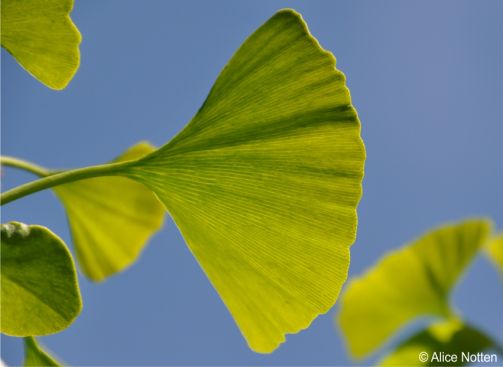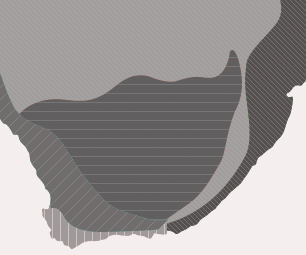Ginkgo biloba
Ginkgo biloba L.
Family: Ginkgoaceae
Common names: ginkgo, maidenhair tree (Eng.); ginkgoboom, nooienshaarboom, vrekboom (Afr.); i-ginkgo (isiXhosa)
Introduction
A long-lived, tall, slender, sparsely branched deciduous tree up to 20–35 m tall with an angular crown and distinctive fan-shaped leaves that turn bright yellow in autumn. Male and female trees are separate (dioecious), male trees producing pollen cones and female trees producing soft, fleshy 20 mm diameter fruit-like structures containing seeds. It is native to eastern China, growing in deciduous forest on well-drained acidic soil, and is now cultivated all over the world and has naturalised in some regions. The wood is slow to decay and fire-resistant and is used to make furniture, casks and for carving. Ginkgo has been used in Chinese medicine for centuries and the nut-like kernels of the seeds are a traditional Chinese food.
The oldest ginkgo in Kirstenbosch was planted above the Cycad Amphitheatre by the first Director, Harold Pearson in 1913. A few more trees were planted in the Gondwana Garden, beside the Botanical Society Conservatory (glasshouse) at Gate 1, to represent the living relative of fossil ginkgos that grew on the ancient continent of Gondwana 200 million years ago.

References
- Plants of the World Online. Ginkgo biloba L. https://powo.science.kew.org/taxon/urn:lsid:ipni.org:names:262125-1. Accessed 13/06/25.
- Wikipedia. Ginkgo biloba. https://en.wikipedia.org/wiki/Ginkgo_biloba. Accessed 13/06/25.
Plant Attributes:
Plant Type: Tree
SA Distribution:
Soil type: Sandy
Flowering season:
PH: Acid
Flower colour:
Aspect:
Gardening skill:
Special Features:
Horticultural zones






Rate this article
Article well written and informative
Rate this plant
Is this an interesting plant?
Login to add your Comment
Back to topNot registered yet? Click here to register.